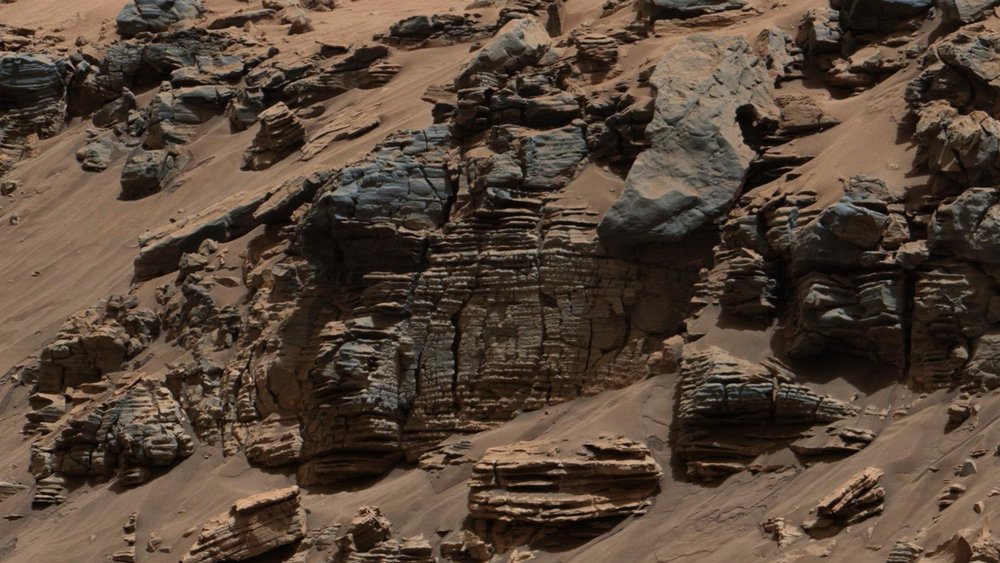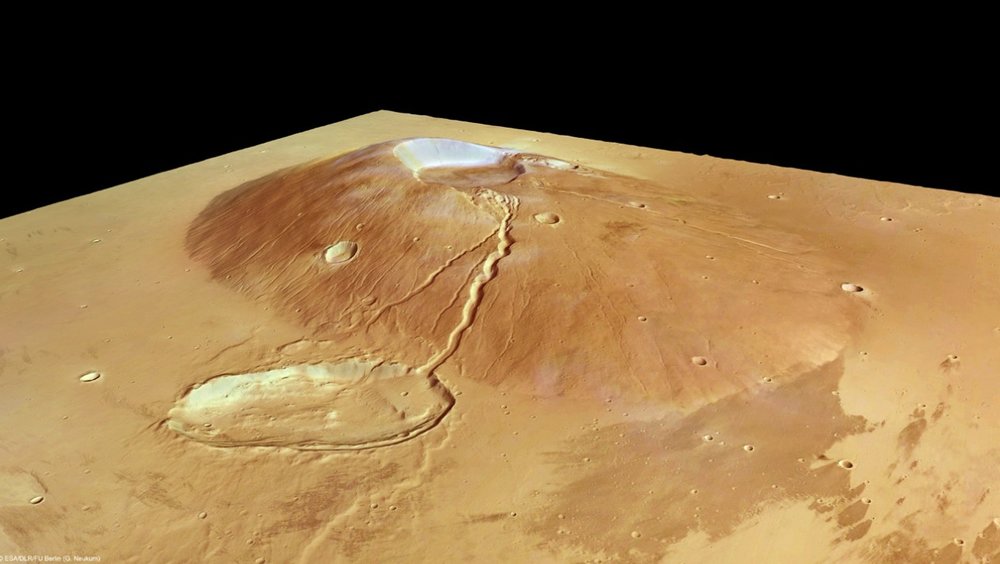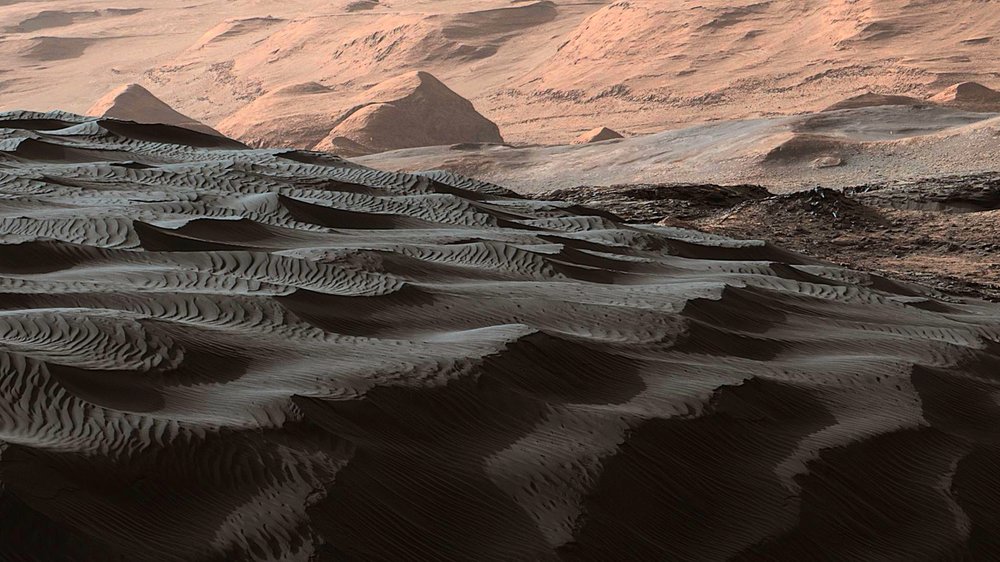Nasa’s Curiosity Mars rover has been exploring Martian territory for more than 5 years and till now, it has some pretty cool discoveries about the history of Earth’s closest planetary neighbor.
The car-sized rover fitted with a camera has returned images which prove that life had once existed on the Red planet. But recently, Curiosity stumbled upon something mysterious that has puzzled scientists at NASA. Could the new images be proof that life on Mars is possible?
Crystal Formation on Martian Rock

NASA is claiming that these formations could be an indication that crystals had once existed in the gaps and have now finally dissolved
Last week, a photo was released on the official Twitter page of Curiosity Mars that showed a set of bizarre stick-like formations in a Martian rock which has the entire scientist community curious about what the strange figures could be.
The space agency is claiming that they could be an indication that crystals had once existed in the gaps and have now dissolved, leaving behind traces of minerals. The images were discovered on New Year’s Eve after it was sent to one of the sites on Mars that NASA had been interested in observing.
Unique Patterns Discovered by NASA’s Reconnaissance Orbiter
Till now, NASA’s rover has discovered some interesting facts about Mars that indicate that life could be possible on the Red planet.

The most recent layered rock formations uncovered by Curiosity
In 2017, the Reconnaissance Orbiter that had been a part of NASA’s Mars mission showed breathtaking imagery of fault activity on planet’s northern Meridiani Planum which had resulted in unique swirling pattern. The patterns varied from clean breaks to different distortions that looked like they had been stretched out.
These variations indicated that the faults had formed in different time intervals resulting in layers that were at different levels hardening. The layers that were more stretched out indicated that they were still soft when the faults had occurred whereas the layers that had hardened resulted in clean breaks instead.
The Honeycomb Landforms in Hellas Basin Floor
Other interesting terrains have also been captured by the NASA’s orbiter, including the vast honeycomb landforms in the planet’s oldest impact basin where each individual cell is almost 6 miles in width. Scientists have been trying to find out what natural phenomenon could be responsible for these mysterious land textures.
Some scientists have speculated that the ‘honeycombs’ could be a result of glacial events in the past whereas other believe wind erosion to be its main cause. The orbiter’s high-quality images captured with HiRISE instrument has revealed great depth in these fascinating landforms showing the rippling effect in the sand that gives evidence of wind erosion.

Signs of volcanic activities has also been observed in some cells and NASA has even said that the evidence suggests that these natural processes have occurred only recently, and may still be occurring in parts of the vast planet.
The Truth Behind Mars’ Black Sand Dunes
The stunning sand dunes on Mars have also been a focus of attention for NASA and recent images by the Orbiter have spotted the region which has been producing the sand to feed the planet’s dunes.

Mars’ black sand dunes
One of the scientists explains that the sand grain travels with the help of wind which lifts the particles from the surface of the ground and when the sand particles are released, they bounce in a series of hops and jostle other particles on the ground as well causing them to roll along. This process causes the sand particles to smooth out their edges, taking a spherical shape and breaking up into tiny pieces until they are completely disintegrated.
Since the old sand particles are destroyed due to repeated impacts, new sand must be created to replace them. Since Mars has these sand dunes present even today, scientists have the reason to believe that there must be a source that has been supplying these dunes with newly manufactured sand particles.










